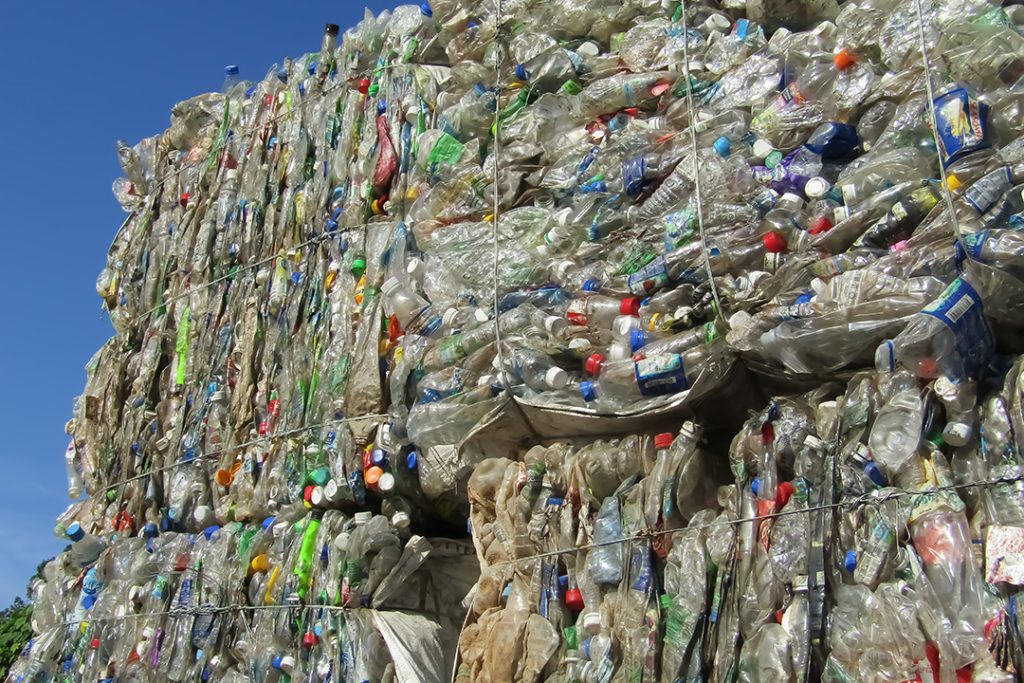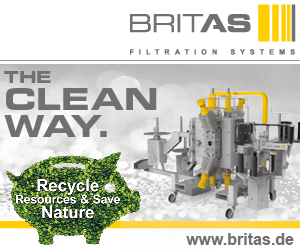
The latest Greenpeace report challenges the viability of U.S. plastics recycling. | MuhammadAzman/Shutterstock
A new report from Greenpeace USA asserts no plastics in the U.S. meet the definition of recyclable. The head of one plastics group countered the analysis “could actually cause greater environmental harm.”
The “Circular Claims Fall Flat Again 2022 Update” from environmental organization Greenpeace argued that no type of plastic packaging in the U.S. meets the definition of recyclable used by the Ellen MacArthur Foundation’s New Plastics Economy Initiative, which is a 30% recycling rate across a region of 400 million people. The Ellen MacArthur Foundation is an international organization that advances the circular economy, and its definition of recyclable was used to set benchmarks for its 2025 Global Commitment goals for brands.
Greenpeace conducted a survey of recycling facilities and used data from industry reports to develop “reprocessing rates” for different types of plastic.
The reprocessing rate determines “if sufficient capacity exists to assure customers that a plastic product has a sufficient likelihood of actually being recycled into a new product,” according to the report. It was this rate Greenpeace used to compare different plastics with the Ellen MacArthur Foundation’s 30% threshold.
PET and HDPE have reprocessing rates of about 20% and 10%, respectively, the report said. Overall, the U.S. has a 5% plastic recycling rate, it added.
This release updates a 2020 Greenpeace report that found the same things. The updated report has gained mainstream news coverage, including from the Guardian, NPR and CBS.
Industry Reacts
Several plastics industry groups pushed back against the claims in the report. Steve Alexander, president of the Association of Plastic Recyclers (APR), said he is still reviewing the entirety of the report but it appears to him that the 5% recycling rate number is off. (APR owns Resource Recycling, Inc., publisher of Plastics Recycling Update.)
“It all depends on what the denominator is,” he said. When looking at recycling, APR uses the amount of consumer-facing packaging produced. Alexander said it appears Greenpeace is using all plastics created as a denominator.
That includes durable goods, including toilet seats and other products, Alexander said. Consumer packaging is made mostly of PET, HDPE and PP, he added, and an APR report found that those three resins used in a packaging context have a 21% recycling rate.
“The recyclers have the capacity today to recycle that at 42% but we can’t get the supply,” Alexander said.
The National Association for PET Container Resources (NAPCOR) report on PET recycling for 2020 found that PET bottles have a 26.6% recycling rate in the U.S. A separate industry report found a 27.9% recycling rate for natural HDPE bottles and a 34.2% recycling rate for color HDPE bottles in 2019.
The National Waste and Recycling Association CEO Darrell Smith said the opening statement of NPR’s story suggests that the vast majority of plastic put in blue recycling bins is headed to landfills and “that is not true. Our members own the majority of recycling facilities in the country. And we can confirm that recyclables get recycled.”
The Recycling Partnership’s CEO Keefe Harrison said in a statement that she agrees “that plastic recycling isn’t a panacea for plastics waste.”
“However, the reality is that the world won’t just stop making plastic tomorrow, so what do we do today?” Harrison added. “We must partner to do the hard but impactful work of building a better system, one that focuses on reducing, reusing and then recycling all we can.”
Harrison said that’s why The Recycling Partnership “remains committed to working with all stakeholders, including companies that produce plastics, to make recycling better.”
“Together we can deliver a transparent and accountable system that delivers recycling’s enormous economic and environmental benefits,” Harrison said.
Alexander added that it’s “unfortunate that people tend to do everything they can to attack the one solution to the plastic packaging sustainability problem that works: recycling.”
“It’s working every day,” he said. “We’re always going to have plastic packaging, so we need to make sure it’s sustainable, and recycling is the vehicle to do that.”
Matt Seaholm, president and CEO of the Plastics Industry Association, said in a statement that the “activists at Greenpeace cannot call themselves environmentalists while simultaneously discouraging recycling as part of the solution to our world’s waste problems.”
“There is no question that we as a society can and must recycle more. However, their assertions that recycling can’t keep plastic materials within the circular economy is disingenuous and irresponsible,” Seaholm said. “Recycling is real, and the claims that it can’t ever work, made in this document, will likely result in unnecessary waste and public reaction that could actually cause greater environmental harm.”
Seaholm also noted that “nowhere in the Greenpeace-created document is there a focus on the value that plastics provide,” such as in health care settings and in reducing food waste.
Report findings
The updated report also claims that plastic is toxic and that toxicity is a major barrier to recycling, along with economics, and “confirmed a key finding of the 2020 report: acceptance of a plastic item by a MRF does not mean that the item will be recycled.”
The report said that mechanical and chemical recycling of plastics “has largely failed and will always fail because plastic waste is: (1) extremely difficult to collect, (2) virtually impossible to sort for recycling, (3) environmentally harmful to reprocess, (4) often made of and contaminated by toxic materials and (5) not economical to recycle.”
It included several case studies on failed chemical recycling plants.
“The failure of the concept of plastic recycling is finally becoming impossible for the companies and industry associations that promote it – and the non- governmental organizations (NGOs) that they fund for this purpose – to ignore,” the report said.
Greenpeace is calling for companies to move to reuse systems and packaging-free approaches, with at least 50% reusable packaging in use by 2030; standardize reusable packaging and build shared reuse systems and infrastructure; phase out all single-use plastics, virgin or recycled; annually release verified data about their single-use packaging footprint; and advocate for political action to drive industry-wide transformation.
Lisa Ramsden, Greenpeace USA senior plastics campaigner, said in a press release that “single-use plastics are like trillions of pieces of confetti spewed from retail and fast food stores.”
“It’s simply not possible to collect the vast quantity of these small pieces of plastic sold to U.S. consumers annually,” Ramsden said. “More plastic is being produced, and an even smaller percentage of it is being recycled. The crisis just gets worse and worse, and, without drastic change, will continue to worsen as the industry plans to triple plastic production by 2060.”
The original survey of acceptance of plastic items at U.S. materials recovery facilities (MRFs) was done in October 2019. The most recent update, in August 2022, was carried out by volunteers of The Last Beach Cleanup and included two chemical engineers and a recycling industry expert, the press release noted.
Ramsden also called for the industry to “stand on the right side of history this November and support an ambitious Global Plastics Treaty.”
“We are at a decision point on plastic pollution,” Ramsden added. “It is time for corporations to turn off the plastic tap.”
A version of this story appeared in Resource Recycling on October 25.
More stories about industry groups
- Q&A: With EPR incoming, end markets are crucial
- NY legislative session ends, again without EPR
- Major plastic initiative sets sights on system change



